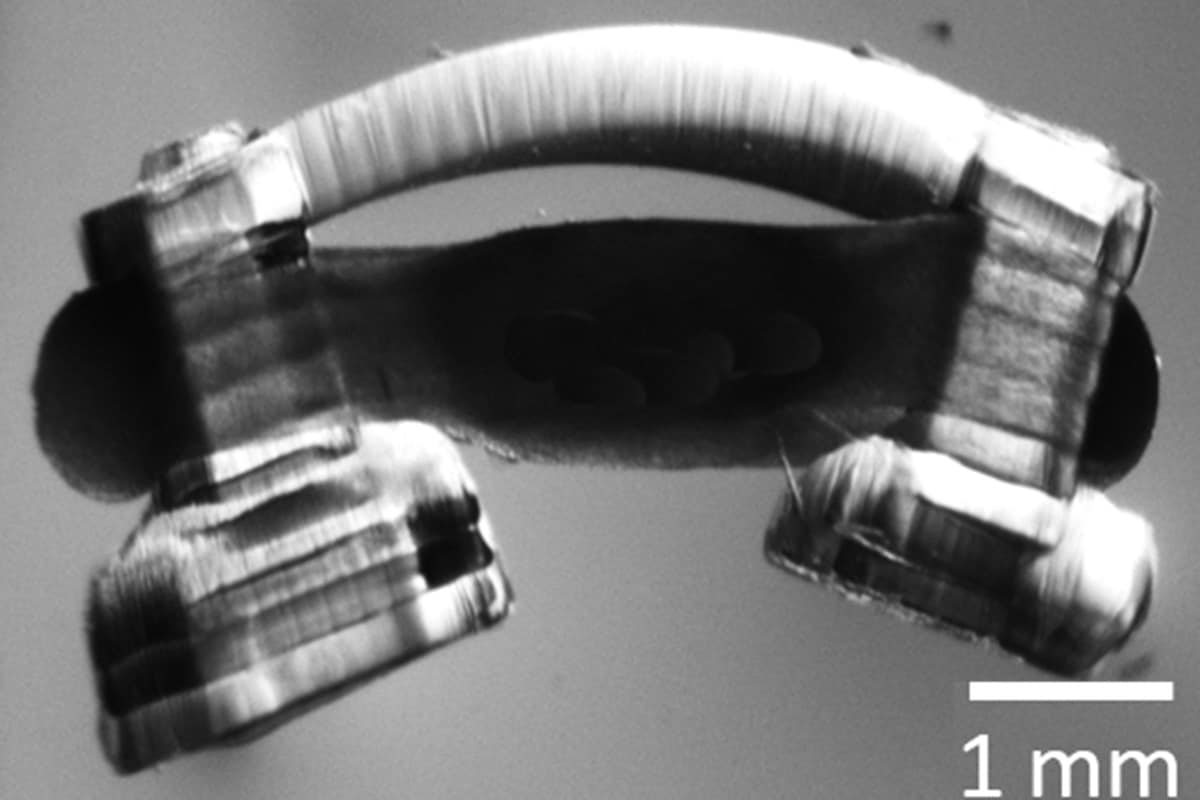
A research team from the University of Illinois at Urbana-Champaign has successfully integrated an intact spinal cord with muscle cells to make moving “bio-bots”. The integration of muscle and spinal cord gives the bio-bots’ movement a natural walking rhythm.
Three-dimensional structures that mimic parts of the human body can be used as models to help researchers understand how the actual systems in the body work, or to test new therapies or drugs. Previous versions of bio-bots could move when their muscles contracted. Now, with a spinal cord, the bio-bots can move with a more natural rhythm.
These bots were made for walking
To make the bots, the researchers 3D-printed a small skeleton consisting of two supports and a flexible bridge between them. They then added muscle cells to the skeleton, which grew into a ring of muscle.
One of the more difficult parts of this work was integrating an intact rat’s spinal cord: no one has previously managed to continue to grow an intact rat spinal cord once it had been removed from the animal. After extracting the spinal cord, the researchers added it to the skeleton along with the muscle cells. After one week, they saw that junctions had formed between the spinal cord and muscles. These junctions looked like those formed when neurons connect to muscles in the human body and appeared to show that the spinal cord and muscles were communicating.
To make the muscles contract, the researchers added glutamate to the outside of the bio-bots. Glutamate is a molecule that nerve cells use to send signals to other cells, and adding it to the bio-bots caused their muscle cells to contract in a walking rhythm. Once the glutamate was washed away, the movement stopped.
Taking the next steps
This research marks the first time that a rat spinal cord has been integrated with muscles to make a primitive nervous system. The researchers hope their bio-bots could be used to study the peripheral nervous system – a difficult part of the body to examine in live animals or humans. Their next step will be to improve the bots’ gait to make it resemble a normal walk.
“The development of an in vitro peripheral nervous system – spinal cord, outgrowths and innervated muscle – could allow researchers to study neurodegenerative diseases such as ALS [amyotrophic lateral sclerosis] in real time with greater ease of access to all the impacted components,” says Colin Kaufman, the paper’s lead author. “There are also a variety of ways that this technology could be used as a surgical training tool, from acting as a practice dummy made of real biological tissue to actually helping perform the surgery itself. These applications are, for now, in the fairly distant future, but the inclusion of an intact spinal cord circuit is an important step forward.”
The bio-bot is described in APL Bioengineering.
